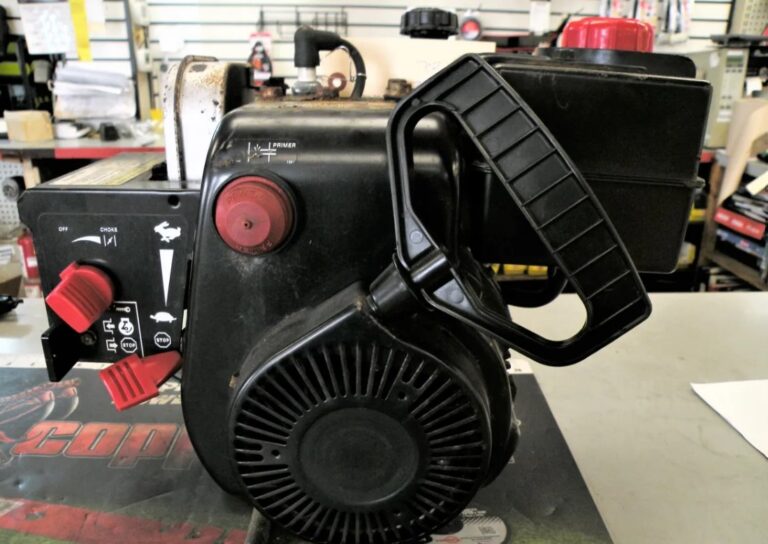How To Get Jet Ski Off Floating Dock? [3 Workings Ways]
Even though docking is typically simpler, launching a jet ski off a floating dock can be challenging. This is due to various factors, such as an overweight Jet Ski, worn-out sliding wheels, and dryness. Whatever the cause, this article will provide all the information you require on How To Get Jet Ski Off Floating Dock?
How To Get Jet Ski Off Floating Dock?
There are three major methods to remove a jet ski from a floating dock. You can lift the front of the Jet Ski, pull the handlebar, or push the front side. Hop on the back of the Jet Ski as it slips into the water after it gains velocity and begins to slide. Make sure to detach the Jet Ski from the wench or any other dock-side tie-downs before moving it.

Push The Front Side
When removing a jet ski from a floating dock, hold the front of the hull with one hand while using the other to grasp the handlebar grip. Place most of your weight on the front hull as you push. However, you can also gain leverage by turning the steering wheel.
The Jet Ski should begin to fall down and into the water as long as nothing beneath is blocking its route. If this doesn’t work or there isn’t enough space for you to stand, try one of the other methods listed below.
Draw The Jet Ski Back
If pushing the Jet Ski doesn’t work, tugging it can give you more leverage. Grab the handlebar with one hand while placing the other on the rear seat or side of the Jet Ski. Pull the Jet Ski slowly in your direction until it slips down. Head to the front of the Jet Ski if this still doesn’t help.
Lift The Front
Try pulling up the front of your jet ski if it still won’t move. To prevent back pain, bend and raise primarily with your legs. Try pushing the Jet Ski down the dock once you raise it a few inches.
Once it starts moving, climb on the back and steer it into the water. The better docks typically have more wheels, which reduces the likelihood that your jet ski will become tangled up in the floating dock.
How To Undock Your Jet Ski From A Floating Dock?
Even simpler than docking is taking your jet ski off the floating pier. The hull of the Jet Ski will glide easily along the rollers or rails that are present on the majority of floating docks. Remove the fastening rope from the front of the Jet Ski to undock it. The Jet Ski should be gently pushed back until it slips backwards due to momentum.

Climb into the Jet Ski and recline once it begins to travel independently. Leaning back and adding weight will cause the floating dock’s rear to droop, increasing the angle and giving the Jet Ski additional forward motion. The Jet Ski should easily float off the dock and into the lake. The Jet Ski can then be started, and you can leave the dock.
One of the reasons these floating dock systems for jet skis are so well-liked by Jet Ski owners is that they are incredibly easy to dock and undock from. Additionally, they raise the vessel far enough above the water so that they are not in contact with it.
Some floating docks have a lift mechanism that will raise the Jet Ski out of the water if you need to elevate it due to choppy water. Typically, you only need to do this if the water is frequently choppy.
Maintenance Advice For Your Jet Ski Floating Dock
Every Day, Conduct A Visual Check
Before considering stepping onto your floating dock, you should perform a brief visual inspection. Look for any visible damage indications, such as cracks or loose floats. Additionally, look for any surfaces that are stained or rusted.
Although plastic is relatively resilient, it can nonetheless degrade over time and potentially lead to falls through floating docks. Therefore, conducting routine visual inspections of the pier is always a good idea. If damage is discovered, you will be able to make urgent repairs right away.
Regularly Clean The Floating Dock
In addition to visually inspecting your dock, it’s critical to clean it frequently. Your floating dock may develop mould, barnacles, and other forms of creatures that attach to the bottom if you don’t regularly clean it.
You must always inspect the dock’s bottom while cleaning, and if you discover any mould, you must remove it as quickly as possible. Allowing these organisms to adhere to the bottom of your dock could permanently harm it.
Test Their Floatiness
One of the key characteristics you should look for in your floating dock is buoyancy, which is the force that makes things float. Make it a routine to monitor the buoyancy of your floating dock. Test the vessel’s stability and ability to maintain flatness while bearing a specific load.
Check its buoyancy by tying your Jet Ski and yourself on your floating dock. You should thoroughly inspect your dock if it begins to sink or loses any stability. The main function of a Jet Ski dock is to sustain the combined weight of the rider and the Jet Ski. If the floating dock cannot perform this task, it has a serious problem, and you should make the required repairs.
Regularly Check The Connections
Floating docks are often constructed from plastic floats connected by sturdy wire or rope. The floating dock can stay small and stable because strong connectors connect them. However, these connectors may get harmed with time and with heavy use.
The connectors may become brittle with repeated use, collisions, and wave damage. This could quickly cause your dock to fall apart. So make checking the ropes and connectors a frequent part of your floating dock strategy. Look for any evidence of fraying or loosening on the ropes. Additionally, look for any degradation or obvious physical damage in the connectors.
Hardware With Dents Or Holes Should Be Removed
Your floating dock will serve as a launching pad for your jet ski. Additionally, it is intended to serve as a buffer between the shoreline and debris. Your floating dock may get hurt while serving this purpose.
It can be perforated by a piece of wood waste or damaged by the rocks along the coastline. Even while most plastic floats are strong, they are not unbreakable. Therefore, don’t hesitate to remove any damaged plastic floats from the dock.
Changing Out Damaged Floats
Make careful to replace the plastic float from your Jet Ski dock whenever you remove it with a fresh one. Plastic floats are quite robust, but they are still susceptible to damage, and once they are damaged, they must be replaced.
Fortunately, some businesses produce high-quality plastic docks and other attachments, like Hiseadock. They are experts in designing and marketing Jet Ski docks.
Conclusion
This post helped illuminate How To Get Jet Ski Off Floating Dock? It’s crucial to keep in mind to dock the Jet Ski correctly before bringing it indoors. Check that it is properly aligned on the wheels to ensure it will fit. You should protect your Jet Ski with a tarp or Jet Ski cover while it is stored on the pier.
This will lessen the likelihood of debris getting lodged underneath the Jet Ski and impeding the ground and wheels. If you are bringing your jet ski in for the final time of the season, I recommend doing this.
Frequently Asked Questions
How can I exit the jet dock?
To manoeuvre a personal watercraft (PWC), you have to stand in the stern (backside) of the dock and give it a gentle tug while lifting and drawing back.
How is a floating dock removed from the water?
Use 2″ x 8″ boards to build a ramp on the ground to slide the dock parts as you draw them out of the water. You can remove the floats from the water with the layer of algae or seaweed that has developed beneath them.
How is a jet ski secured to a floating dock?
Using cable locks is the simplest way to stow a jet ski on a pier. Link the cable to the dock through the bow (or back) eye. In light of the ease with which keys can be misplaced or dropped into water, a combination cable lock is the best option.
How effective are floating Jet Ski docks?
Due to the amount of air inside them, floating docks float as they are less dense than the water. EZ Linear low-density polyethene (LLDPE) floating docks have hefty, thick walls without a frame.

Welcome to the exhilarating world of Matt Rex, a professional car racer turned renowned vehicle enthusiast. Immerse yourself in his captivating blog as he shares heart-pounding adventures, expert reviews, and valuable insights on cars, trucks, jets, and more. Fuel your passion for speed and discover the beauty of vehicles through Matt’s engaging stories and meticulous expertise. Join the ever-growing community of enthusiasts who find inspiration and expert advice in Matt Rex’s blog—a digital hub where the thrill of speed meets the pursuit of knowledge.







![Does Hyundai Digital Key Work With Iphone? [Explained]](https://www.turbochaos.com/wp-content/uploads/2023/12/Does-Hyundai-Digital-Key-Work-With-Iphone-768x483.jpg)